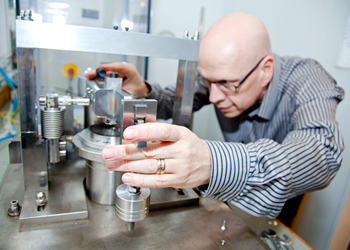Wear Model
The goal of this project is to develop a general model for wear simulation.

Background
Previous simulations of wear at the Group have all been based on the fundamental principles:
- The single point observation method;
- An initial-value process.
In previous studies of the structure of some wear models, we have found that the wear rate can be formulated as the product of the number of asperities or particles interacting with the observed point on a contact surface per second and the wear caused by each typical asperity or particle interaction with the observed point. However, since the topography of real surfaces is often considered random, the friction process and the wear process may also be random. Consequently, this problem has been studied for some time, and we have developed a random wear model.
Publications within the project
Andersson s and Olofsson U. (2005) Toward a general model for wear simulation. IRG-OECD Meeting, June 2005, Uppsala.
Andersson S, Söderberg A. and Olofsson U. (2006, 2008) A stochastic wear model for the interaction between a rough and a smooth surface. Nordtrib 2006, June 7-9, 2006, Helsingör, Denmark, Wear (2008) 763-769.
Andersson S and Olofsson U. (2007) Simulation of plastic deformation and wear of a rough surface rubbing against a smooth wear resistant surface. Rotrib’07, Nov. 08-09, Bucharest, Romania.


